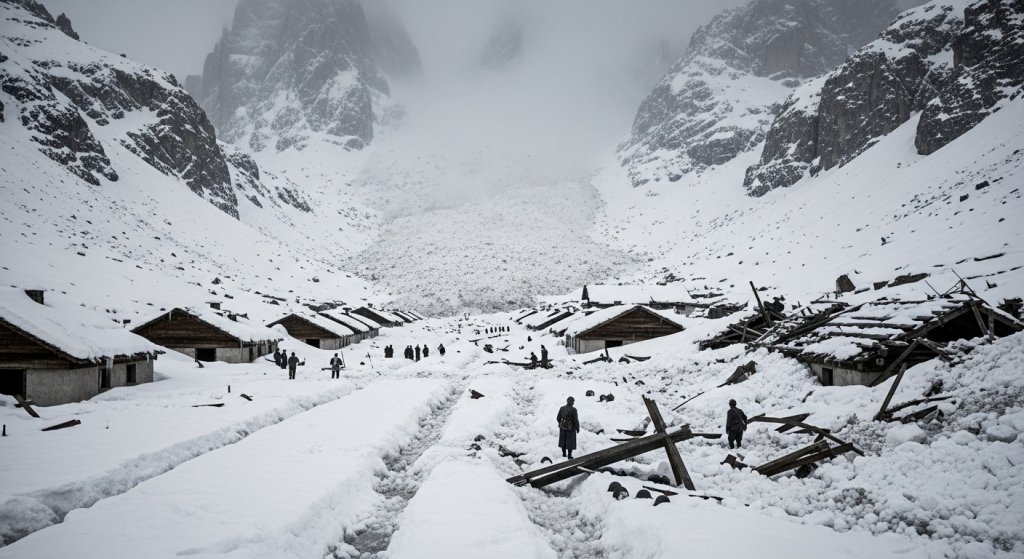Have you ever heard of White Friday? While some people today associate the name with a shopping event, its original meaning is a tragic historical event. White Friday refers to a devastating series of avalanches that took place on December 13, 1916, during World War I. This 1916 avalanche disaster became one of the deadliest natural disasters in modern history. It claimed the lives of thousands of soldiers and left a lasting mark on the history of the Alps.
The Modern Meaning of White Friday
For many people in the Middle East and North Africa, the name White Friday is not a historical reference but a modern one. This term refers to a large shopping event that takes place in November, just like Black Friday in the West. The name was changed from “Black” to “White” to align with regional culture. In many places, “black” has negative meanings, while “white” is a color of purity, goodness, and celebration, especially in Islamic culture. The name connects the shopping event to Friday, a holy and important day of the week for Muslims.
What Is an Avalanche? The Science Behind White Friday
To understand the disaster, it’s important to know what is an avalanche? An avalanche is a large mass of snow, ice, and rocks that falls rapidly down the side of a mountain. A snowpack failure usually causes the avalanche. These failures can happen in two main ways: when a weak layer of snow breaks away, or when a massive amount of new snow adds too much weight, causing the whole snowpack to slide. Avalanches are a very serious danger in mountainous regions.
The Sequence of Events of the 1916 Avalanche Disaster
The sequence of events of the 1916 avalanche disaster was a tragic combination of extreme weather and the brutal conditions of war. For nine days, unusually heavy snowfall—three times more than normal—hit the Alps. This created a massive and unstable snowpack that was up to 12 meters deep in some places. A specific atmospheric pattern then brought a sudden, warm wind from the Mediterranean, which caused a rapid thaw. This “rain-on-snow” event weakened the foundations of the snow layers, setting the stage for a disaster.
On the morning of December 13, 1916, at around 5:30 a.m., dozens of massive avalanches hit across the Italian front. One of the most devastating avalanches struck an Austro-Hungarian barracks on Mount Marmolada. It buried the entire encampment under over 200,000 tons of snow and ice. Of the 321 soldiers in the barracks, the avalanche buried at least 270 alive. This event, along with many others across the mountains, led to a massive loss of life. In some cases, soldiers on opposing sides may have even deliberately triggered avalanches using cannon fire to hit enemy positions.
The Human Cost and Legacy
The death toll from the 1916 avalanche disaster was immense. Historians estimate that the disaster killed between 2,000 and 10,000 soldiers on that day alone. Many consider this the deadliest avalanche event in history, making it a powerful and solemn day in the history of World War I. For the soldiers fighting in the mountains, the avalanches posed a greater threat than the enemy. Rescuers never recovered many bodies. Even today, human remains from the event occasionally resurface as the glaciers retreat.
In Italy, people also remember the day as “La Santa Lucia Nera,” or “Black St. Lucia,” because of the tragedy. This name reflects the date of the disaster (the Feast of St. Lucia is December 13) and the blackness of the day for the thousands of families who lost loved ones.
Avalanche Adaptations
Since the 1916 avalanche disaster, we have learned a lot about how to deal with avalanches. Avalanche adaptations include:
- Structural methods: People build these physical structures in mountainous areas to protect people and property. They include building snow sheds over roads and installing fences or dams to control the snow and prevent it from gathering.
- Non-structural methods: This includes using small, controlled explosions to trigger mini-avalanches in a safe, planned way and planting forests. Forests help stabilize the snowpack and prevent large avalanches from happening naturally.
Conclusion
White Friday is a somber reminder of the power of nature, especially when combined with the struggles of war. The story of the 1916 avalanche disaster is a fascinating piece of history that shows us how natural events can have a huge impact on human life. By learning about this historical event, we can gain a deeper understanding of the world and its past.
To continue your journey into the richness of the Arabic language and its cultures, consider using the Kaleela app. It provides comprehensive lessons on Modern Standard Arabic and various dialects, helping you master not just the words but also the traditions behind them.



